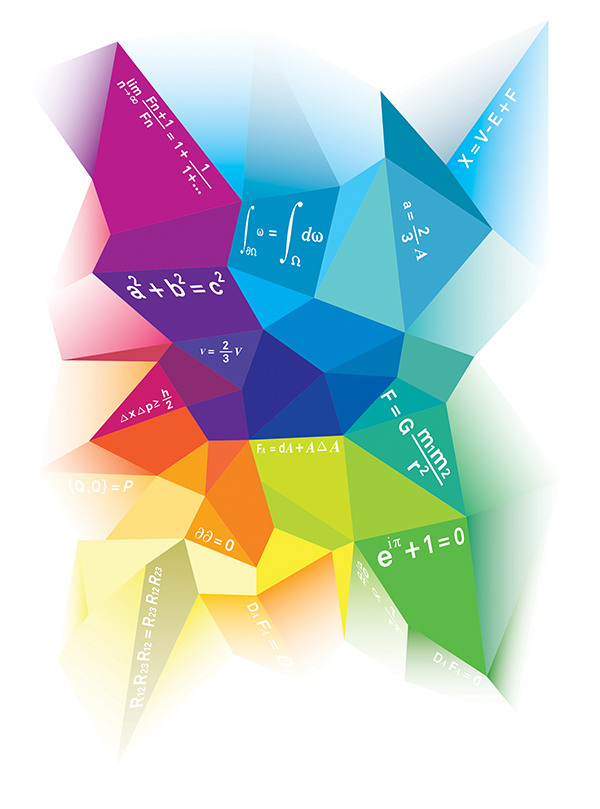Numbers, equations and idealized shapes have been an important part of human history for thousands of years. With simplicity and elegance, they express ideas and relationships that can help us make sense of the world around us. As physicist Eugene Wigner observed in his 1960 article "The Unreasonable Effectiveness of Mathematics in the Natural Sciences," the concepts of mathematics, no matter how abstruse, frequently enlighten and magnify even the deepest of scientific theories, often leading to accurate, if unexpected, empirical predictions.
From early formulas such as the Pythagorean theorem to the definition of pi, to Newton's invention of calculus and Maxwell's equations for electromagnetism, to the Dirac equation for the electron and Einstein's equation for the gravitational field, mathematics has shown that it has the power to shape, and to change, the way we see the world. Through the pursuit of mathematical rigor and precision, we have gained insight into the geometry and structure of the universe, made discoveries about the nature of matter and its relationship to energy and invented countless new technologies as a result of these insights: electrical generation and transmission, radio and television, computers, MRI, GPS and cellular telephones, to name just a few. None of these would have been possible without discoveries in mathematics.

Advancing the frontiers of research in mathematics and the basic sciences is the mission of the Simons Foundation, and this annual report highlights our support for mathematics and its myriad applications. You will read about the pure mathematical research we are supporting to try to elucidate homological mirror symmetry, a long-standing puzzle affecting both math and physics. You will also read about research efforts to develop mathematical tools for today's science - algorithms to parse the reams of information being amassed by modern technology. We are hoping to realize an 'unreasonable effectiveness of data,' to rephrase Wigner's idea, to help us understand physical and biological phenomena. As you will see, the applications of mathematics we support are wide-ranging: geology and seismology, theoretical physics, cosmology, systems biology, proteomics, genomics, neuroscience and even microbial oceanography.
Our 2015 annual report also describes our growing portfolio of investigators, grants and collaborative research projects. Through this support we hope to gain insight into some of the most intriguing questions in science today: What happened in the earliest moments of our universe? What is the nature of matter? How does the brain work? How do our oceans support the carbon cycle and life on Earth?
Scientific inquisitiveness goes well beyond the lab, though, extending to the general public. For this reason, the foundation seeks to share the joy and wonder of discovery through its Education & Outreach program and other initiatives. Our public lecture series provides opportunities for scientists to communicate and discuss their ideas not only with peers but with the community at large. Our support for Math for America and programs such as the BioBus seeks to strengthen the mathematics and science skills of the next generation. There is a new generation of budding young scientists delightfully curious about the world!
We would like to add that it is thanks to our outstanding staff that the foundation is able to support this range of programs. It is a pleasure to work with such a smart, creative, purposeful and dedicated group of people. Looking back on 2015, there was a constant buzz of new ideas being presented. We look forward to this continued vibrancy in the upcoming year.

Marilyn Hawrys Simons, Ph.D.
President

James H. Simons, Ph.D.
Chair
Back To Top